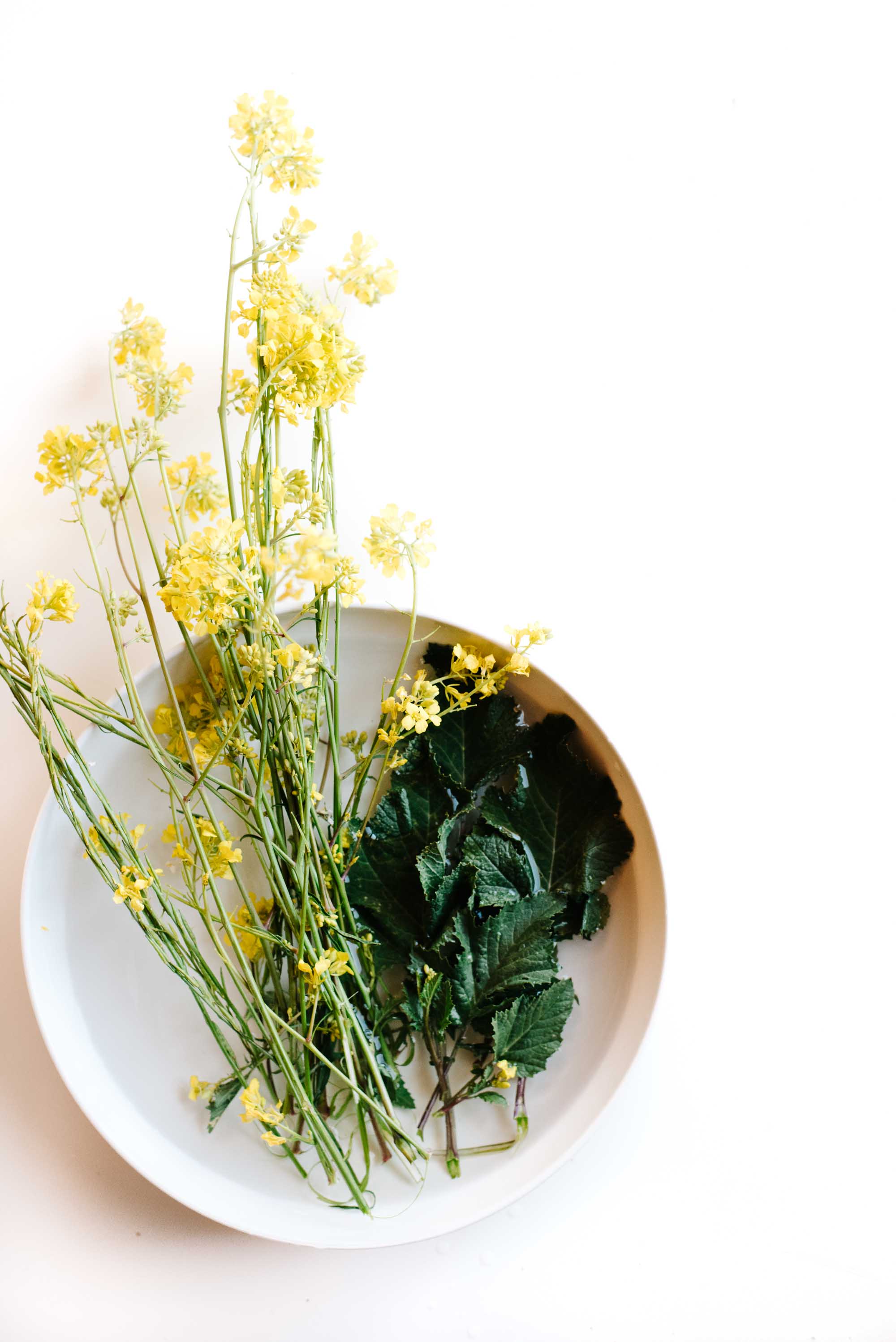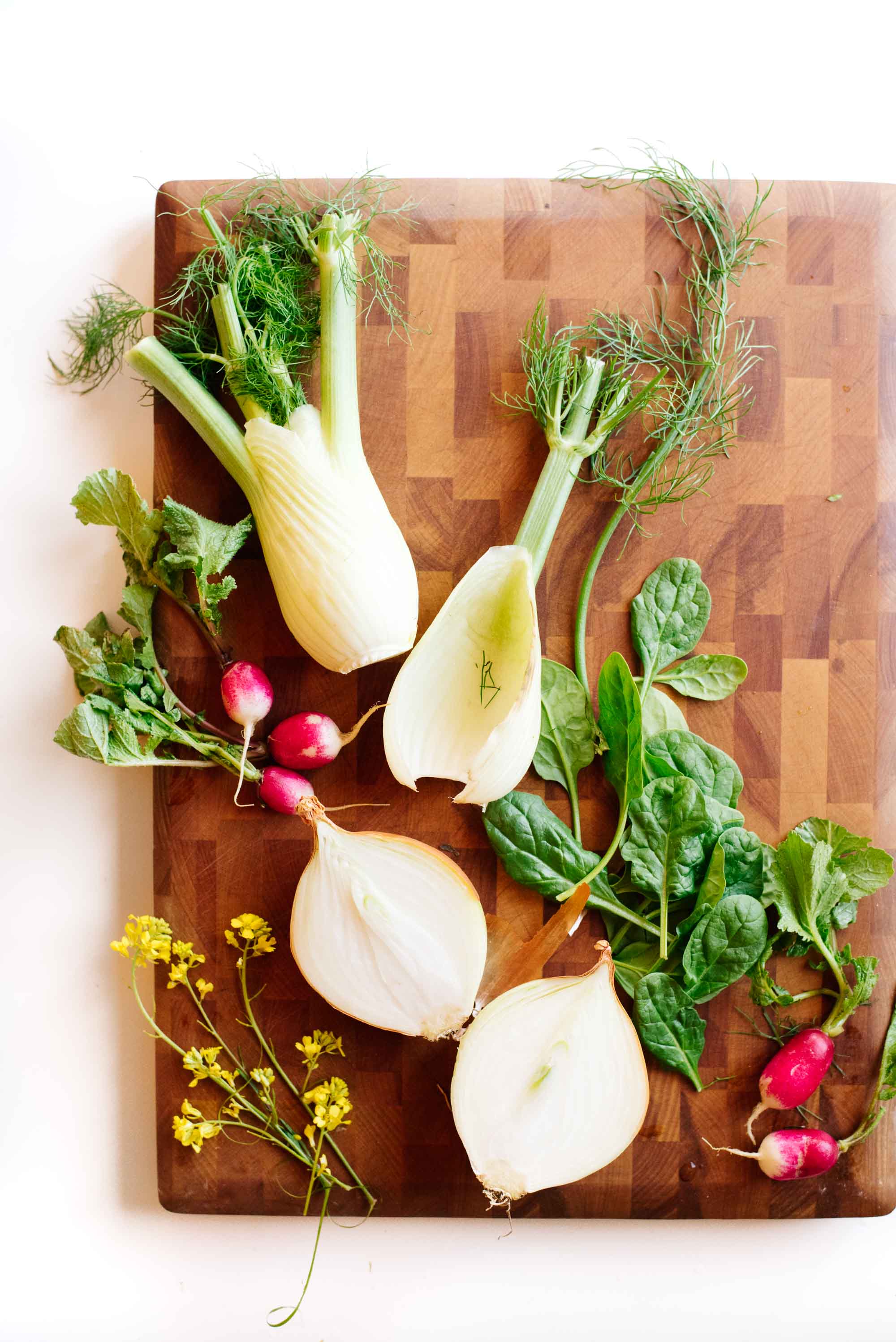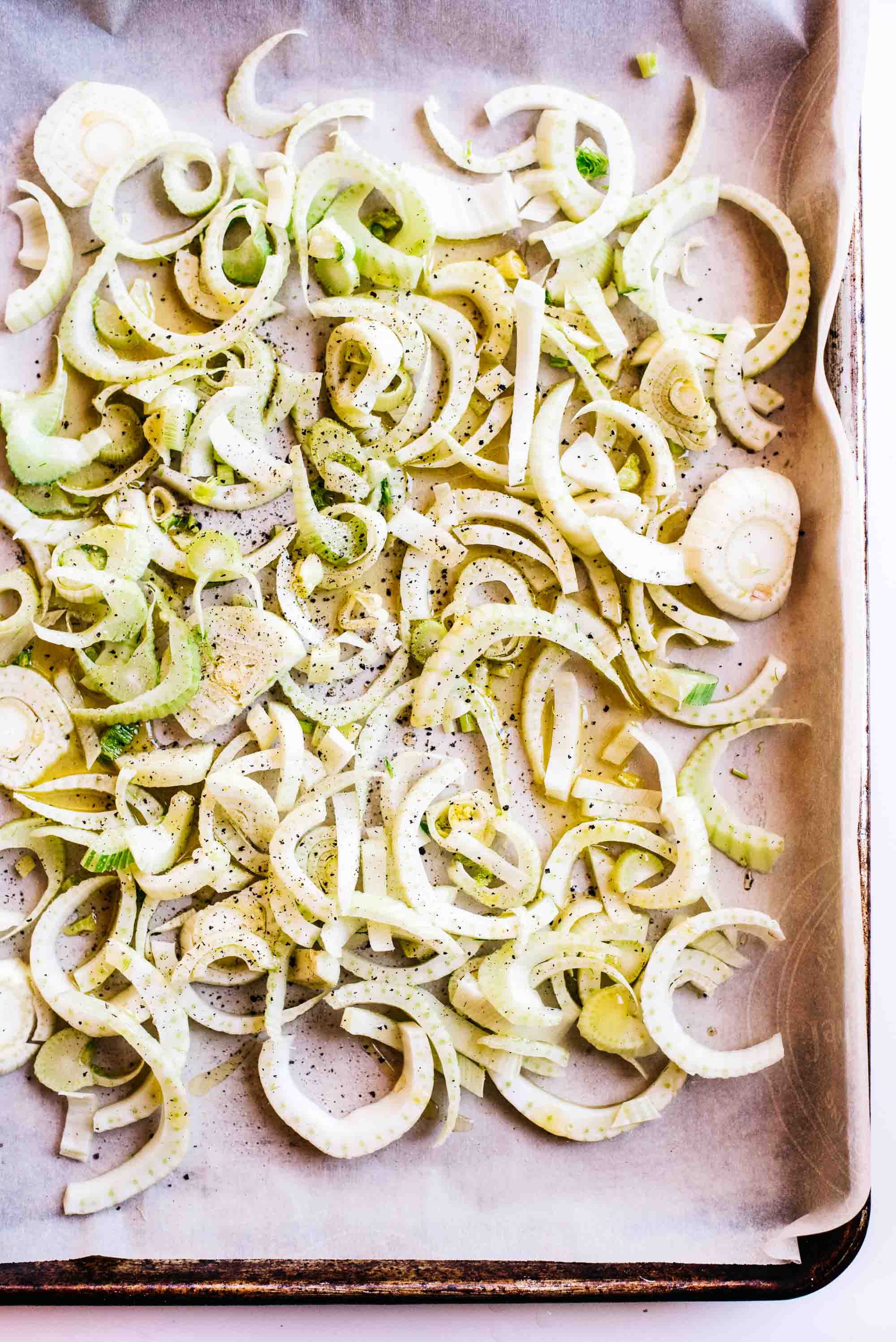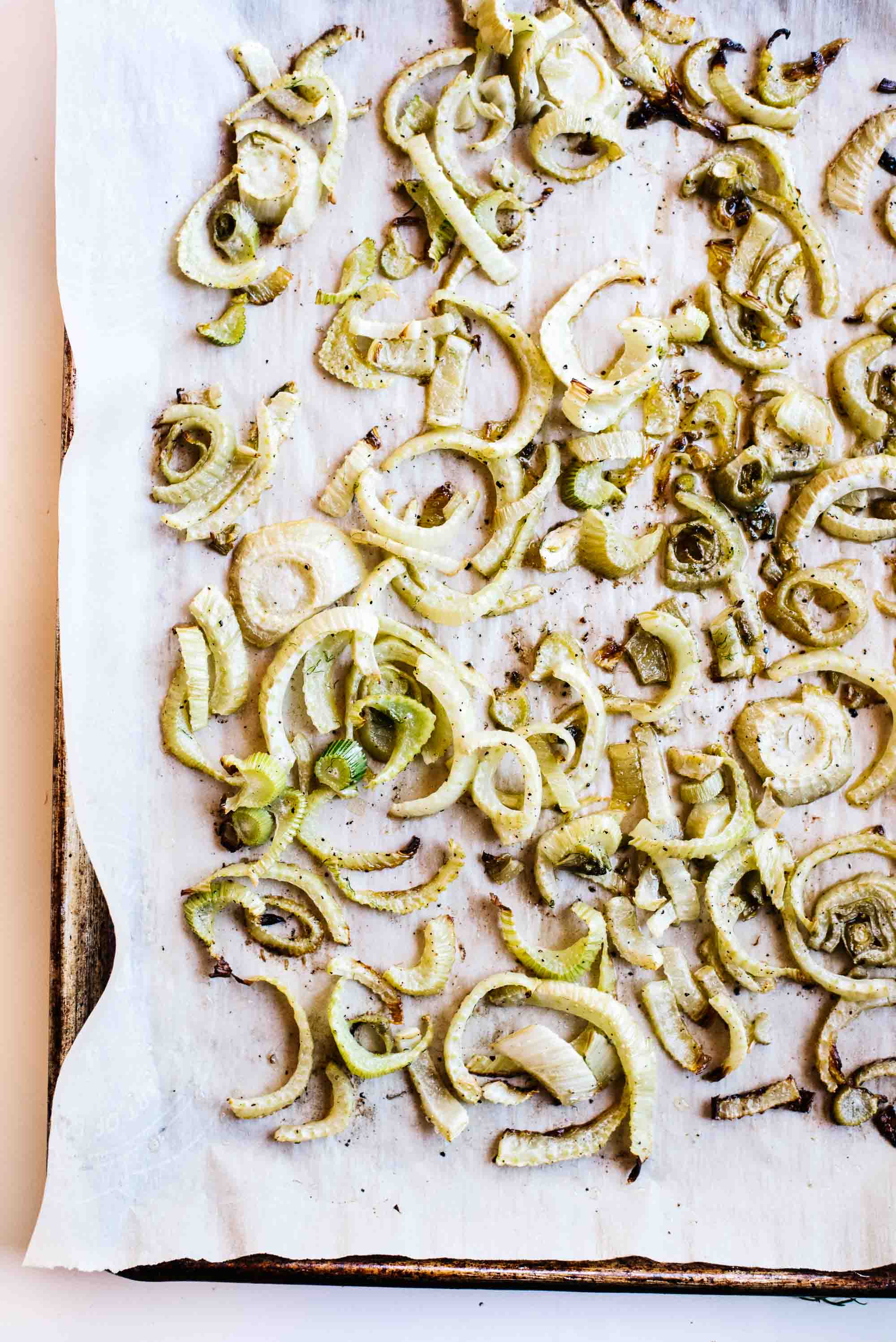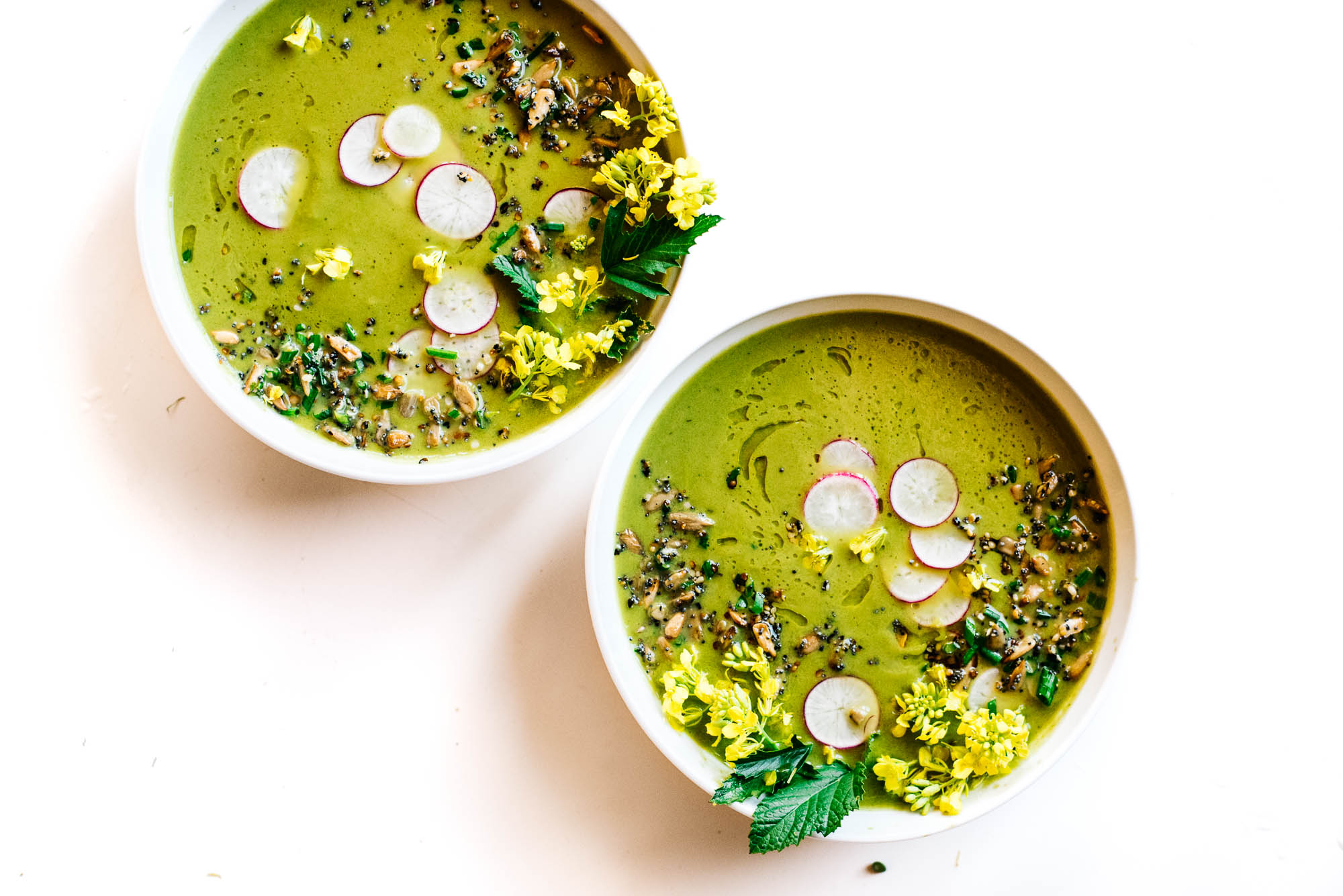
Living on the top of a hill in the middle of the Santa Monica mountains has radically changed my sense of seasonality. I’ve watched as the lush grasses turned from verdant emerald to golden brown, as the violet lupine struggled to bloom after too little rain, too late this year. The mustard plants have gone berserk, growing more than half my height, blooming proud yellow. The sage is insistent. The wild roses have a new lease on life, after an initial bloom a few months ago. I’m learning these cycles.
I’m also learning what’s native and what’s invasive on these hills. My friend Max Kanter, of drought-resistant landscaping company Saturate, is teaching me. Brittle brush, which grows flowers that look like daisies with mahogany brown centers, is native. As is the thin-leaved sage that smells bright and citrus-y, called artemisia californica. Mustard plant (pictured below, left), however, is tremendously invasive. Max tells me that the Spanish brought it here to cover the coastline, so that ships could see the near-neon blossoms as they approached. Turns out it’s also insanely prolific — it’s hard to find a hillside that’s not touched by mustard from here to Rhode Island.
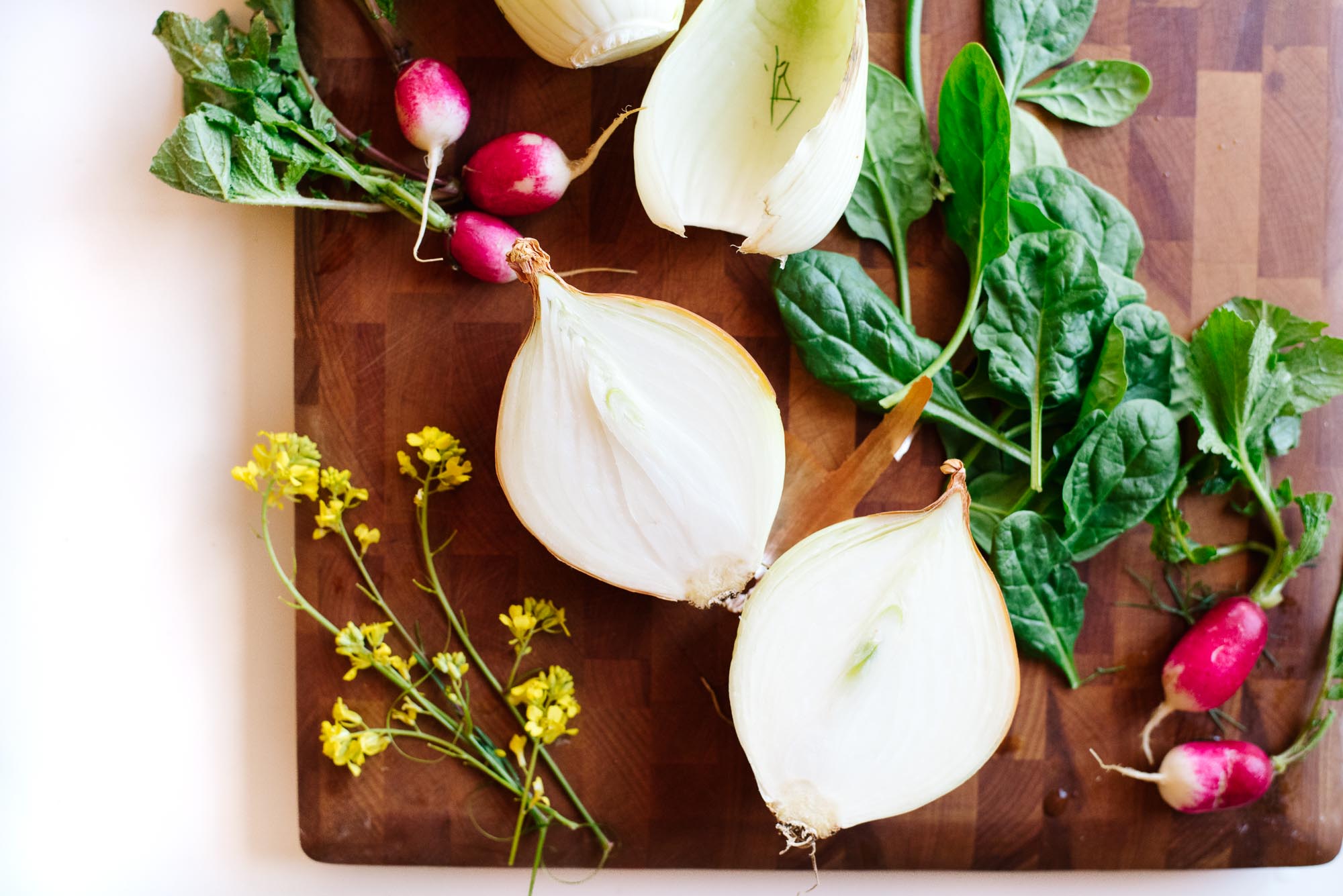
The invasive plant takes a distinct toll in California, as Max informed me it makes fires burn hotter and faster—a unique hazard during fire season here. Taking a cue from my friend Sunny Savage, wild foods expert in Hawai’i, I decided to start eating these invasive plants. On Maui, Sunny runs a food truck that focuses on serving five invasive species. Mustard greens are a high delicacy come spring, and while I feared these greens might be tough and bitter picked fresh, they were absolutely perfect: spicy, tender, and even a little sweet. And the best part? That I was able to wander out my front door to forage for them. I like to think that I’m doing some small part in decreasing the number of mustard seeds out on that hillside.
If you can’t find mustard greens on an unsprayed hill near you or at the grocery store, radish greens or arugula will work. Dandelion greens are also an option (and highly forageable), though tend to be much more bitter. Here, these greens mix with mellow spinach, sweet fennel fronds and bulb, and savory chives and garlic for a beautiful spring soup.

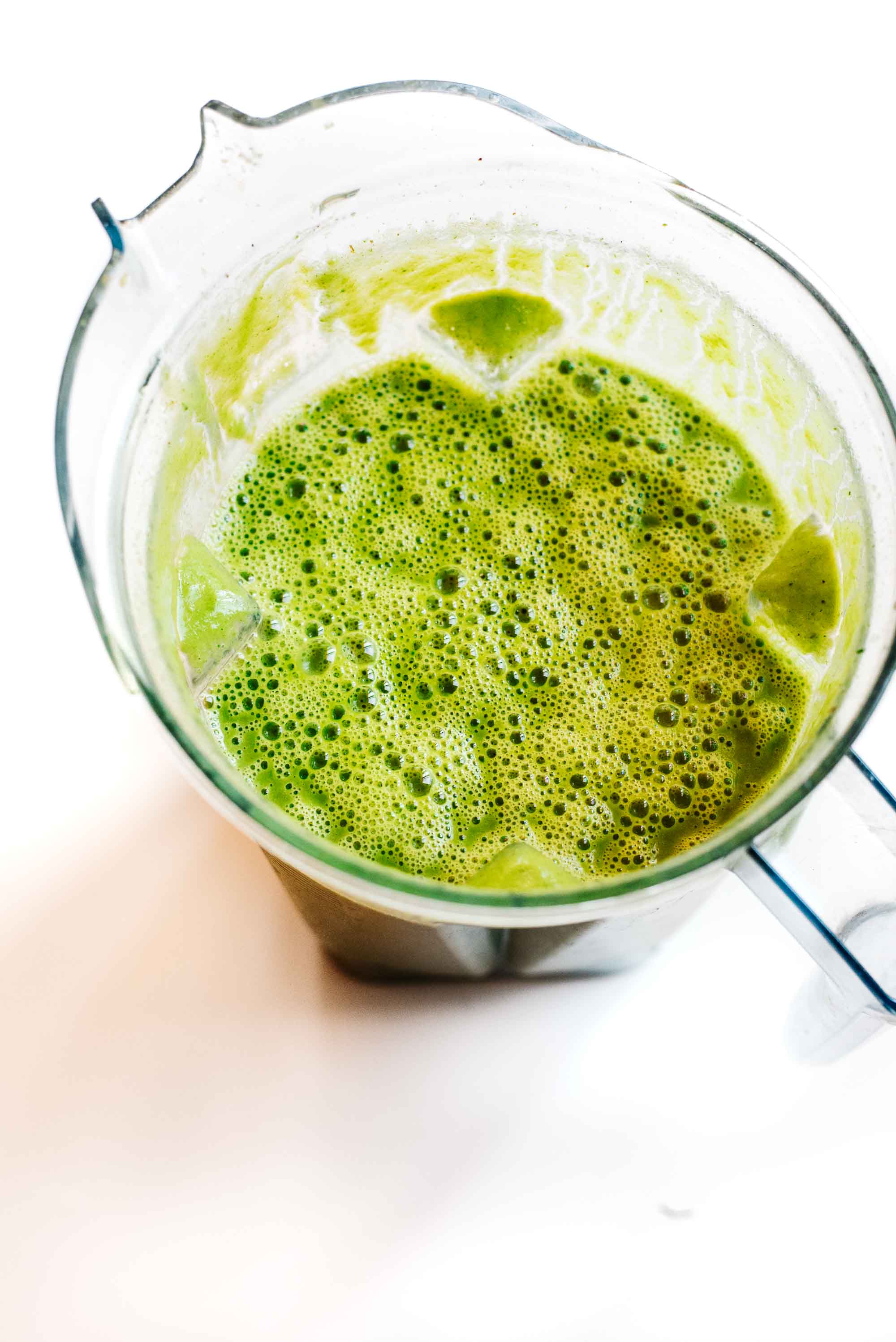
I took a root to bloom approach in this soup, using fennel bulb and fronds and radish bulbs and their greens. Using the whole of a plant is incredibly satisfying, and delivers a unity of flavor that’s exciting to me. The flavors of the radish greens complement the radish itself, just as the fennel bulb is echoed in its fronds. Roasting the fennel brings out its dulcet notes and complexity of flavor, a perfect match for the fistfuls of greens that make up the rest of the soup.
I encourage you to be playful with the greens and herbs you use here — experiment with what’s growing and in season near you. Take the time to identify a few of the plants you see in bloom and bursting into life near you. Then research whether they’re native or invasive. All of this knowledge will not only enrich your meal, it will help you stay connected to the health of the environment in which you live.

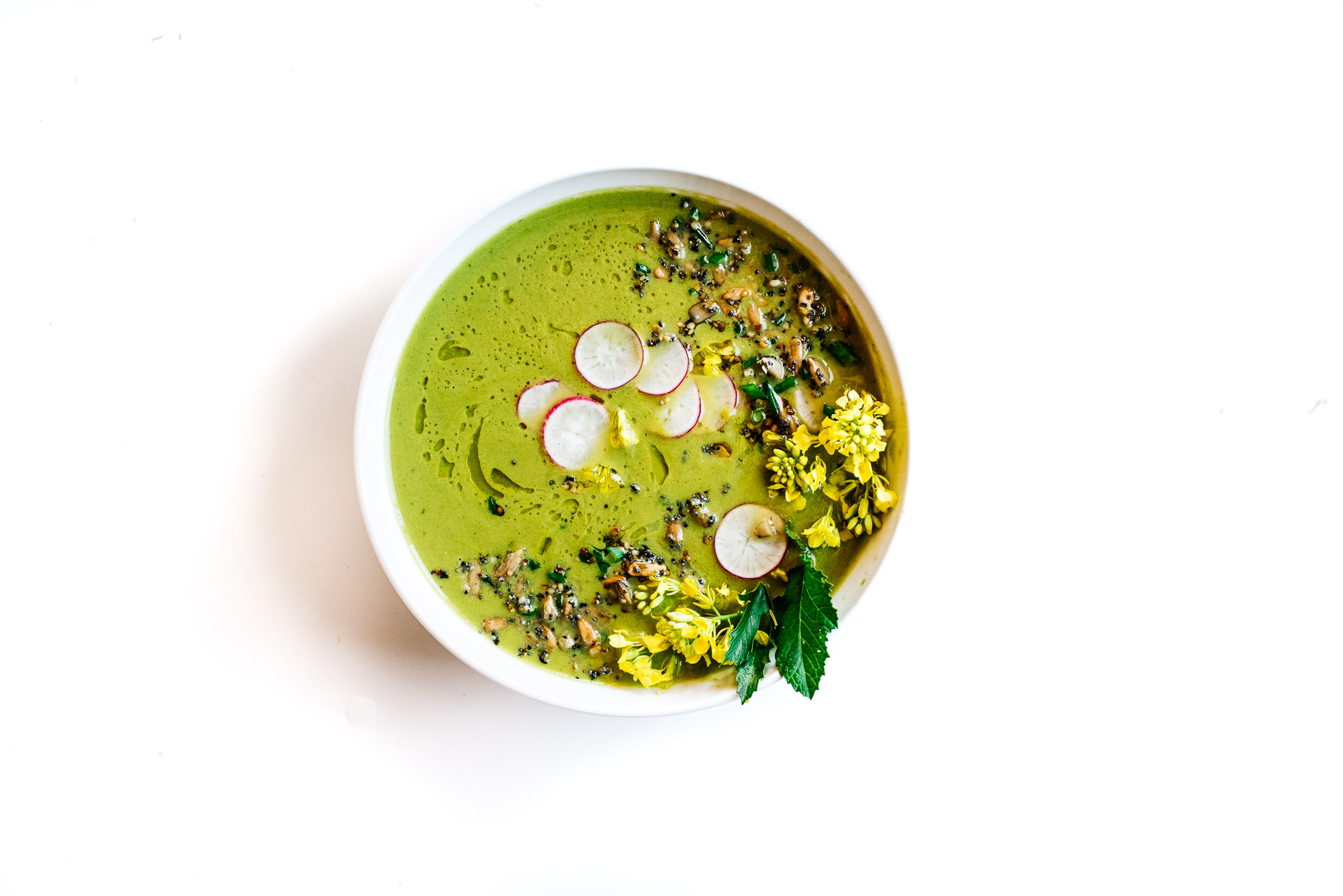

To finish the soup, I added bright pops of lemon zest and lemon juice, a smattering of toasted seeds (inspired by Sherrie Castellano, as always), radish, and a few fresh baby mustard leaves and flowers. Mustard flowers are incredibly delicious, and worth throwing in salads as often as you can. Feel free to improvise as you serve the soup, layering ingredients for texture and taste.
Welcome to spring, to tasting the flavors of the wild plants growing near you, to knowing the land you live on. Welcome. Have a bowl.
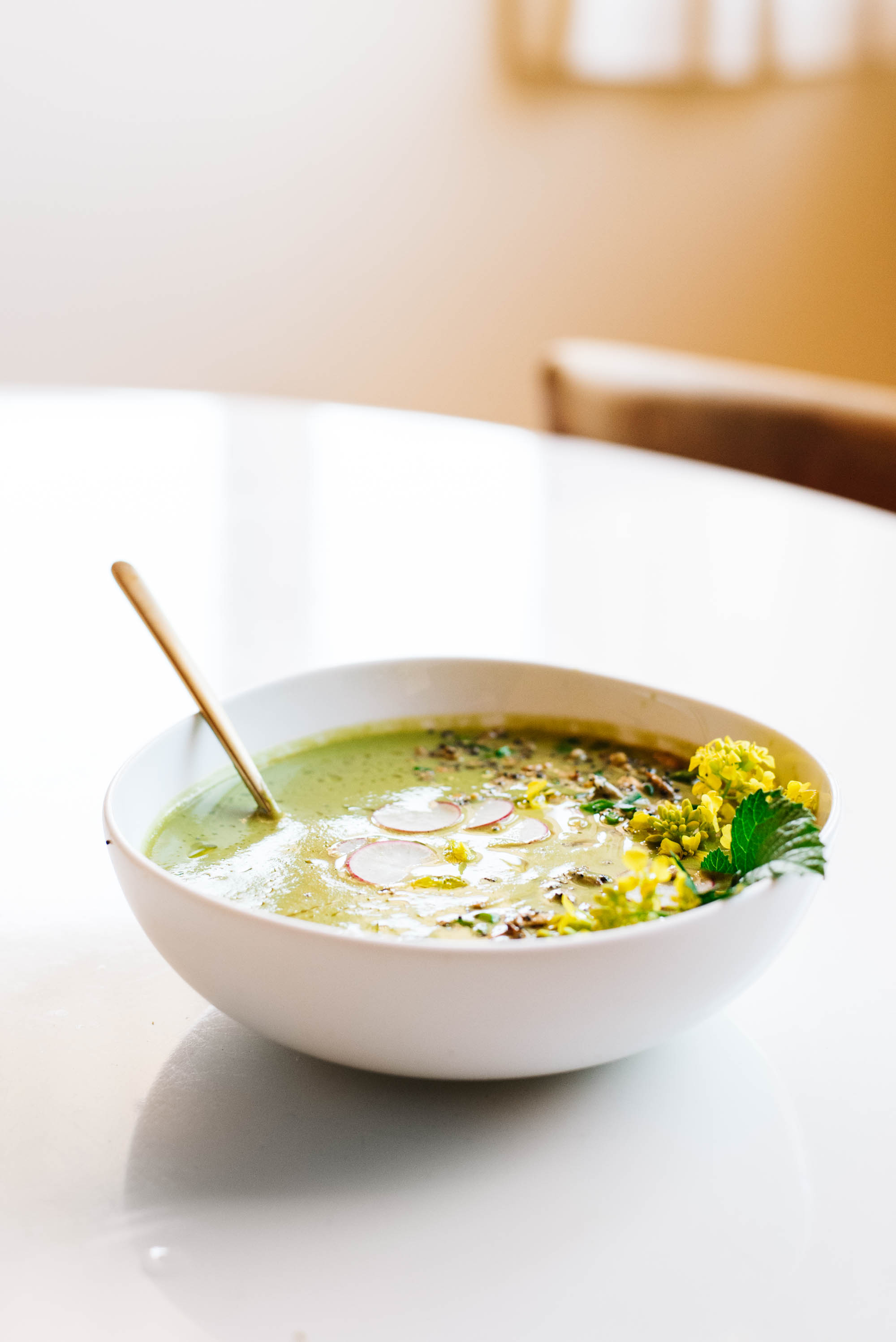
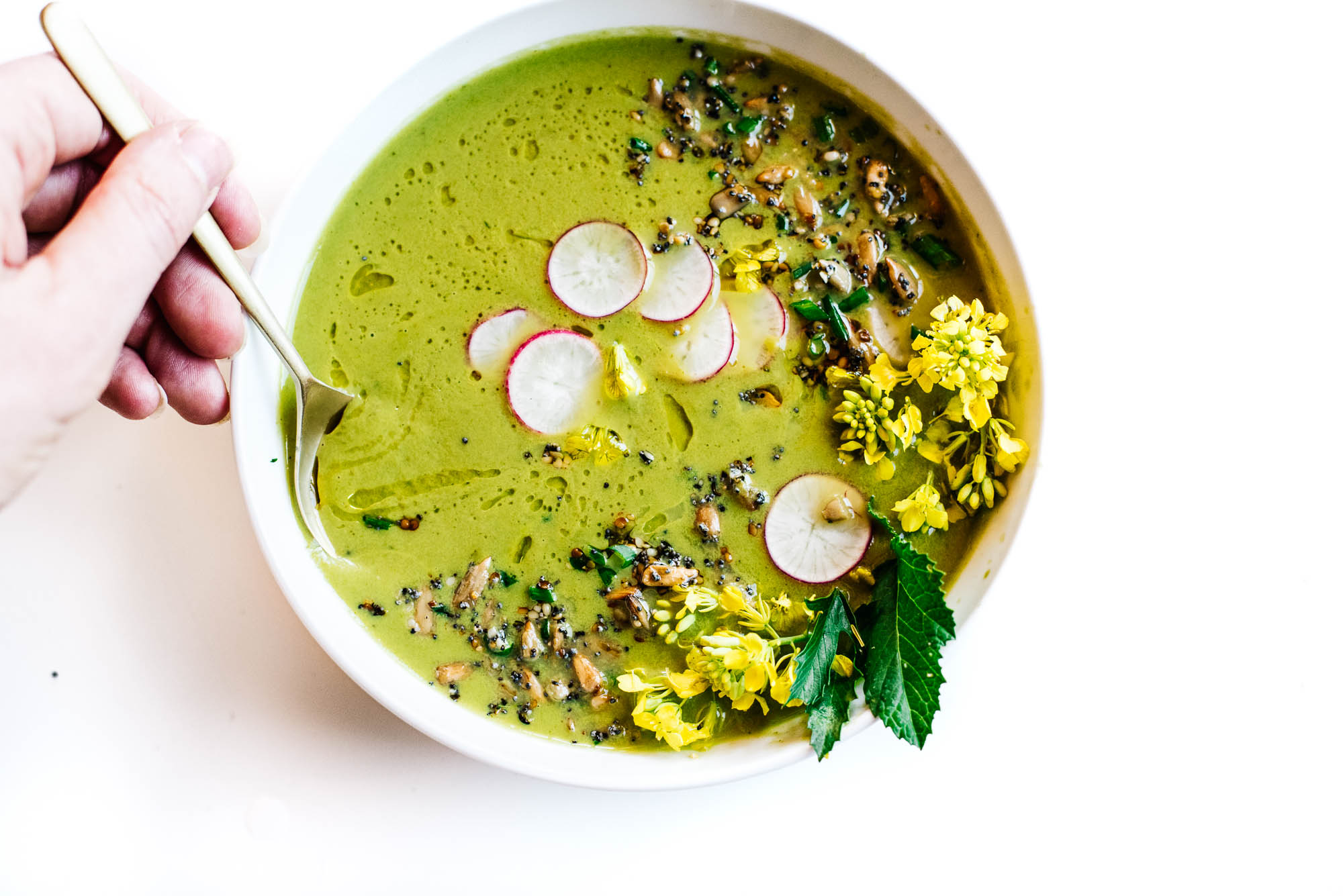
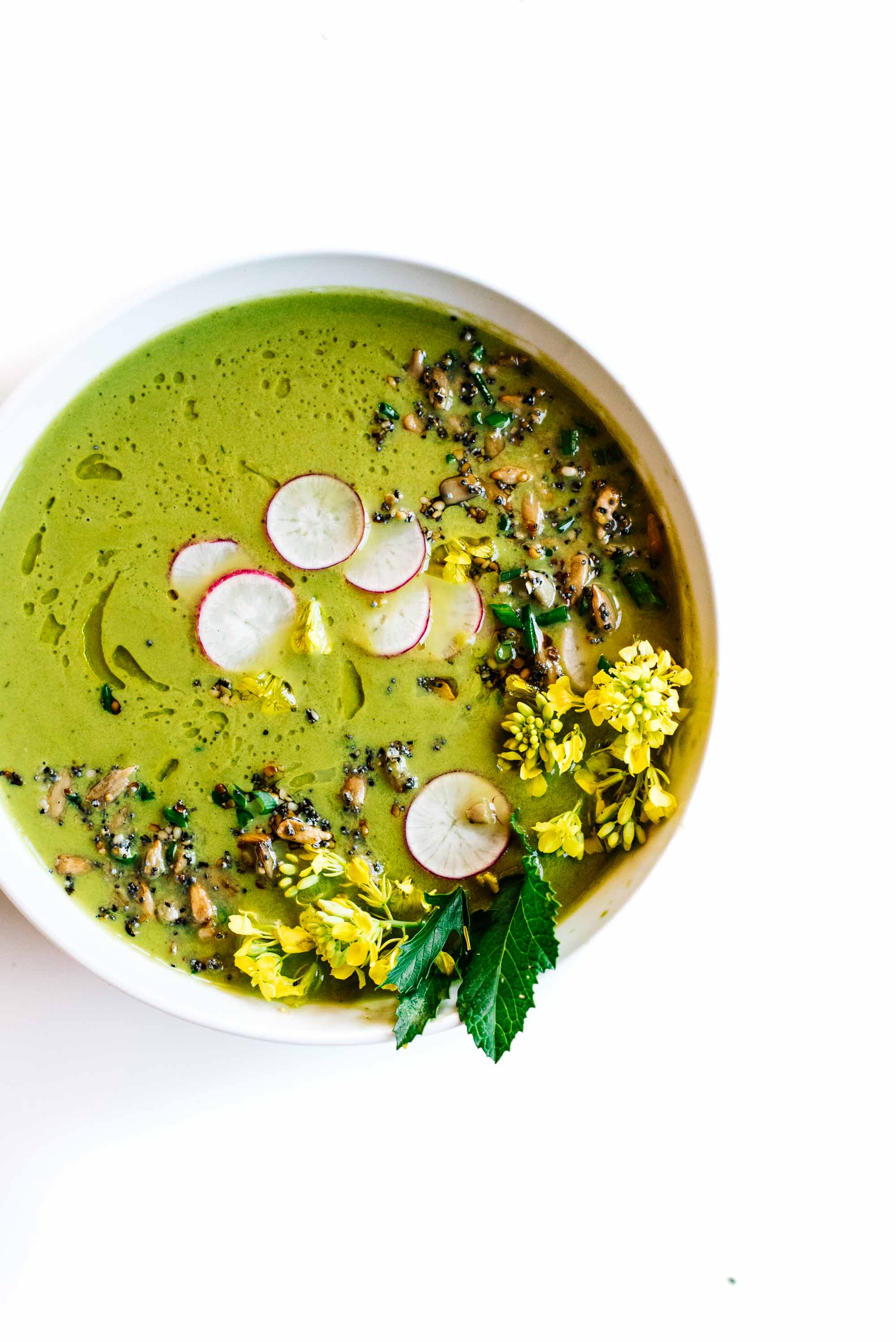

ROASTED FENNEL & SPRING GREENS SOUP.
Ingredients
Method
- Preheat the oven to 400ºF. Line a baking sheet with parchment paper.
- Lay the sliced fennel on the parchment-lined baking sheet in an even layer, and drizzle with olive oil. Toss to coat, then sprinkle with sea salt and pepper. Roast for 20-25 minutes until tender and beginning to brown at the edges.
- Place sliced onion, olive oil, salt, and pepper in a large pot over medium heat. Sauté until golden brown, stirring occasionally. Add the garlic and stir another minute. Add the vegetable broth, lemon zest, lemon juice, and roasted fennel and bring the mixture to a simmer. Simmer for 7 minutes.
- Remove the pot from heat, add the spinach, spicy greens, fennel fronds, and chives. Stir to submerge in the soup, cover, and allow the greens to wilt in the heat of the broth for a few minutes.
- Transfer the whole pot of ingredients to a high speed blender and blend until completely smooth. Return to the pot, taste, and add more salt and pepper to taste.
- Heat 1/2 teaspoon olive oil in a small frying pan over medium heat. Add sunflower, poppy, and hemp seeds, and sea salt and ground pepper. Stir to combine and toast for about 3 minutes, until the sunflower seeds are turning golden. Remove from heat and transfer to a small bowl.
- Ladle the soup into bowls, and top with crunchy seeds, a drizzle of olive oil, thinly sliced radishes, and edible flowers, if desired.


